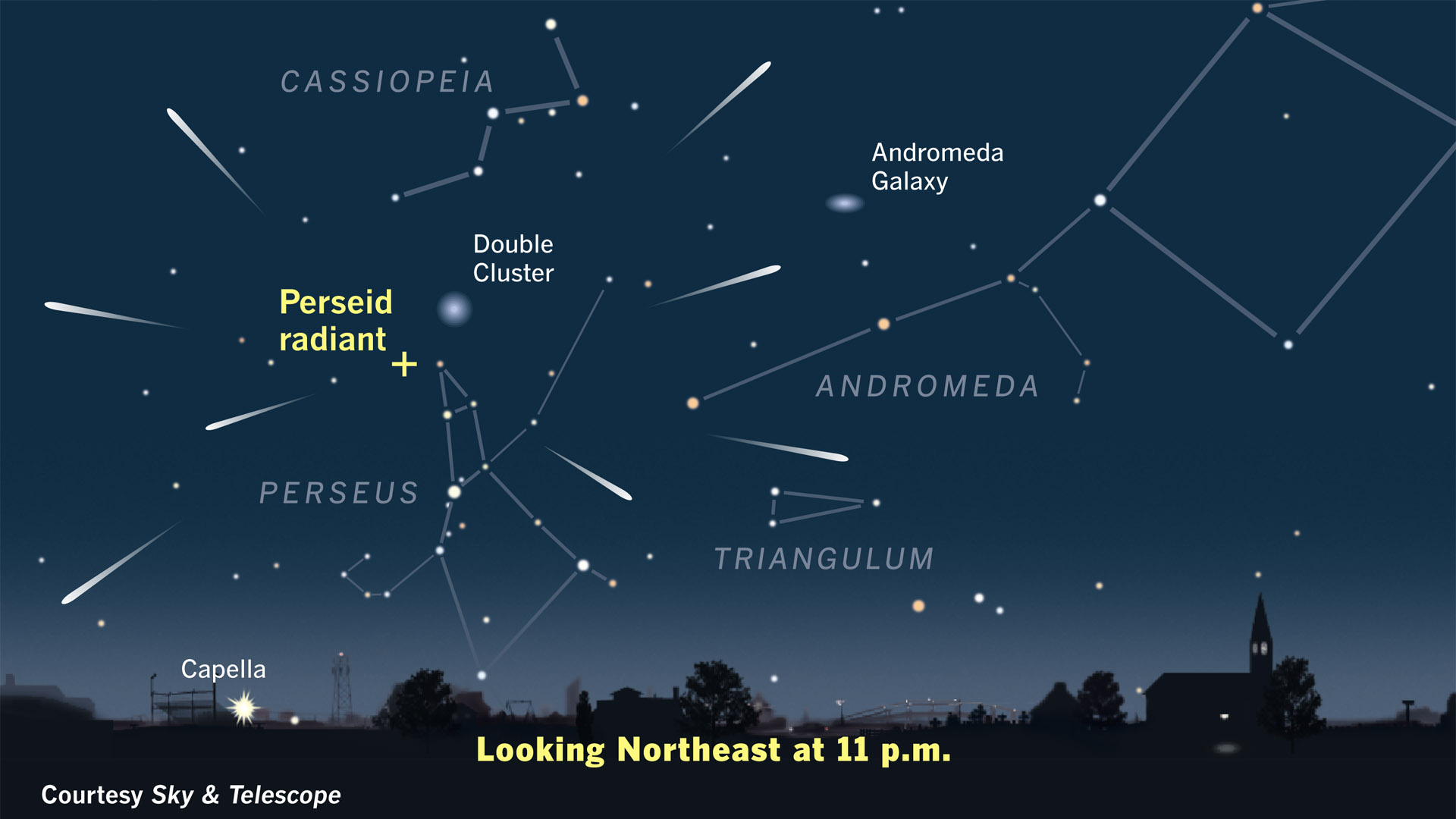Bright Planets Add More Dazzle to Perseid Meteor Shower's Peak

Meteor-catchers heading out to watch the annual Perseid meteor shower this week are in for a special treat. In between watching the show on the north side of the sky, several planets and the moon will show themselves on the southern side.
The Perseids will peak in the early morning hours of Friday (Aug. 12), NASA says, and the show could be even stronger this year. The planet Jupiter has bent the streams of cometary particles, putting more of them in Earth's path.
Some of the meteors, which on Thursday night and early Friday (Aug. 11-12) may stream in at up to 200 per hour, will unfortunately be washed out by the moon until it sets at around 1 a.m. local time. But you can still easily see two planets in the sky, in the constellation Scorpius. Mars is just to the right of the ruddy star Antares. (The name of the star means "rival of Mars" because it is so similar in brightness and shade.) And floating above Antares is Saturn. [Perseid Meteor Shower 2016: When & How to See It]
Earlier in the evening, about 45 minutes after sunset, the planets Jupiter, Mercury and Venus will be visible low on the horizon in the south-southwest, according to NASA's Jane Houston Jones at the Jet Propulsion Laboratory in Pasadena, California. Jupiter will shine bright in the constellation Virgo, with Mercury hover just to its lower right. Venus, meanwhile, will be even lower on the horizon near the constellation Leo, so a clear horizon without obstructing trees or houses would offer the best viewing opportunity.
You can see the meteor shower and the two planets with your naked eye, and there are even more planets visible if you bring binoculars or a telescope. Uranus and Neptune are both visible in the constellation Aquarius, and if you want an extra challenge, the dwarf planet Ceres is visible as well. (Ceres is being visited right now by NASA's Dawn spacecraft.)
There are other celestial objects that are just visible with the naked eye, but you'll see far more detail with a telescope or binoculars. While watching the meteors appear to radiate from the constellation Perseus, you can also look at the Double Cluster in Perseus, or globular clusters in nearby Cassiopeia. In Andromeda, you can also look at the Triangulum (M33) and Andromeda (M31) galaxies.
Editor's note: If you catch an awesome photo of the Perseid meteor shower or planets in the night sky that you'd like to share with Space.com and our news partners for a possible story or image gallery, please contact managing editor Tariq Malik at spacephotos@space.com.
Breaking space news, the latest updates on rocket launches, skywatching events and more!
Follow Elizabeth Howell @howellspace, or Space.com @Spacedotcom. We're also on Facebookand Google+. Original article on Space.com.

Elizabeth Howell (she/her), Ph.D., was a staff writer in the spaceflight channel between 2022 and 2024 specializing in Canadian space news. She was contributing writer for Space.com for 10 years from 2012 to 2024. Elizabeth's reporting includes multiple exclusives with the White House, leading world coverage about a lost-and-found space tomato on the International Space Station, witnessing five human spaceflight launches on two continents, flying parabolic, working inside a spacesuit, and participating in a simulated Mars mission. Her latest book, "Why Am I Taller?" (ECW Press, 2022) is co-written with astronaut Dave Williams.


